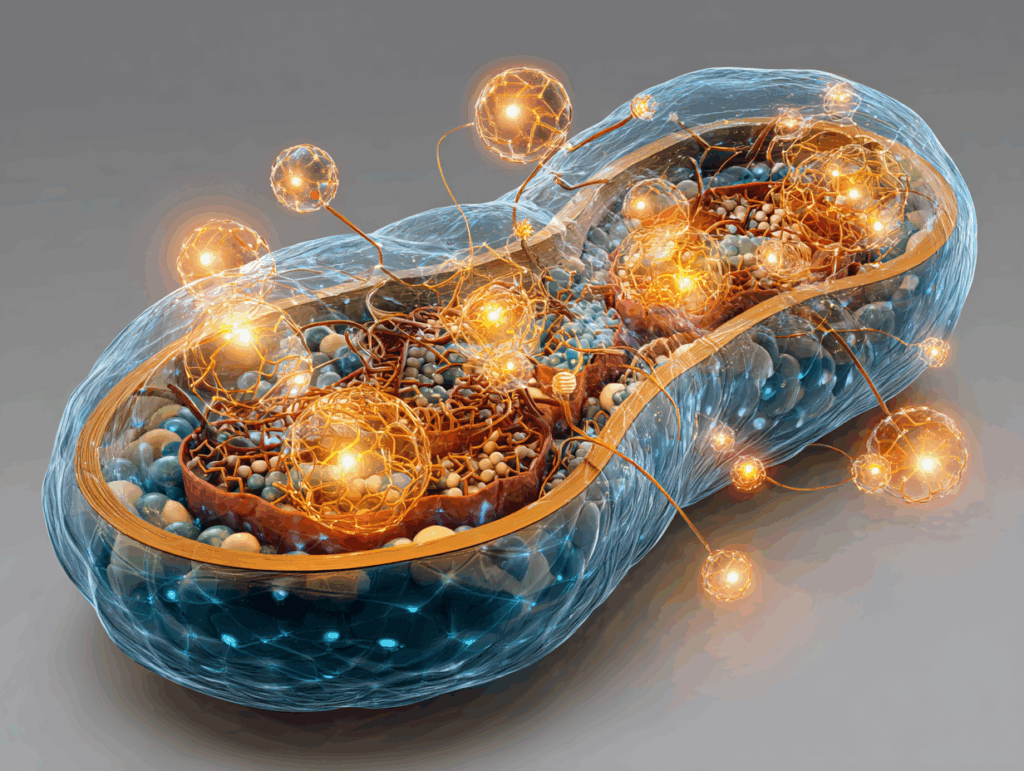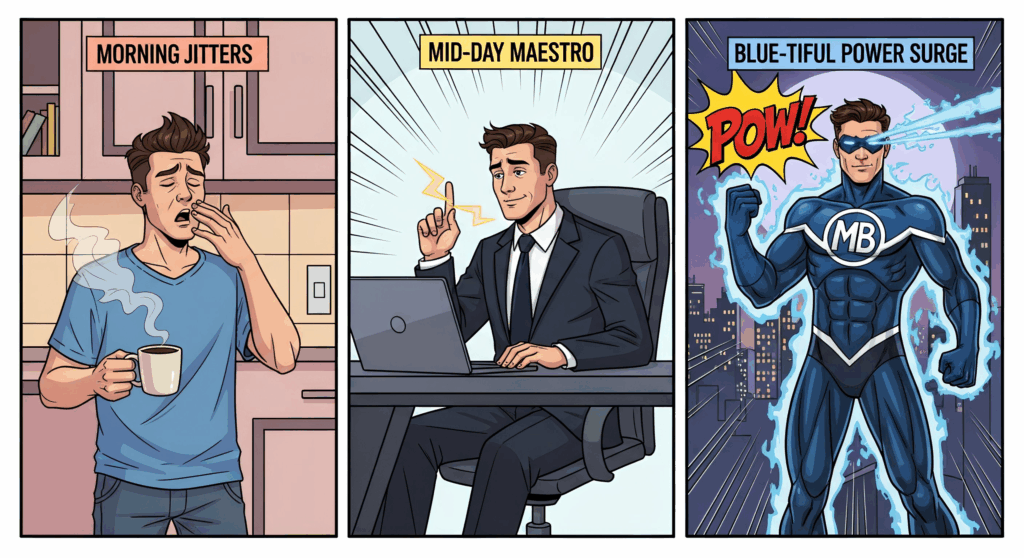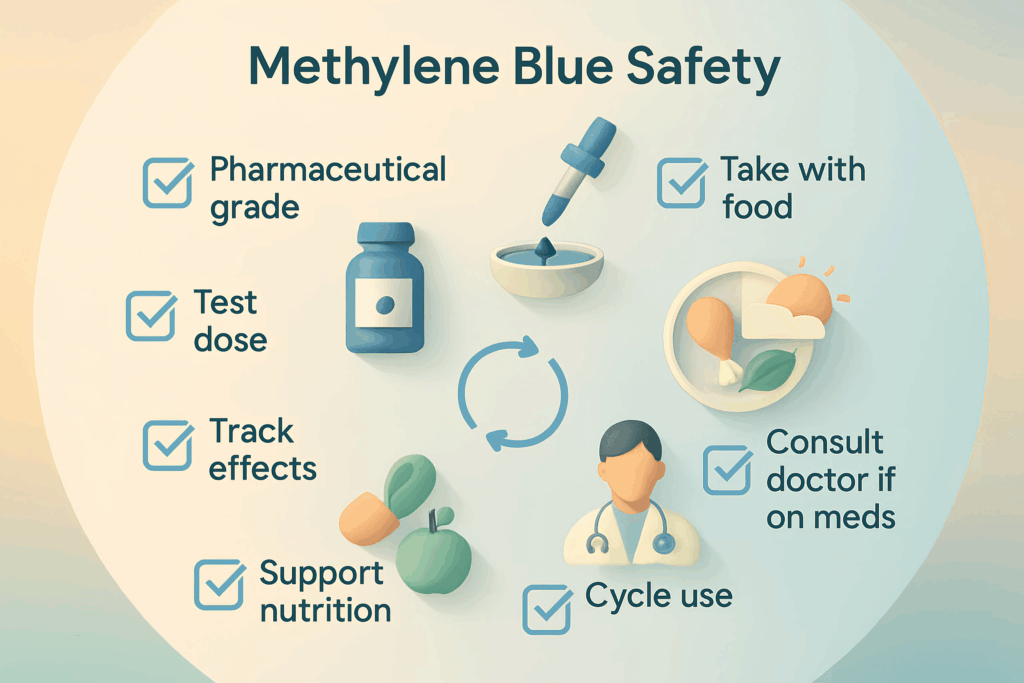You’ve probably heard the hype. Someone online swears methylene blue changed their focus, their energy, their whole cognitive game. Then you see another article warning you it’s dangerous, that it’ll deplete your enzymes or rewire your mitochondria in ways you’ll regret. So what’s actually true?
Here’s the thing: both sides have a point. Methylene blue is legitimately interesting from a neuroscience perspective, and yes, there are real risks if you’re not thoughtful about it. But the story is way more nuanced than either the cheerleaders or the skeptics let on.
Let’s break down what we actually know, separate hype from reality, and figure out if this is something worth your attention.
Disclaimer
This article is for informational purposes only and is not intended as medical advice, or as a substitute for the medical advice of a physician.
What Even Is Methylene Blue?
Methylene blue has been around for over a century—it’s a dye, originally used to stain cells under microscopes and treat certain medical conditions. What makes it relevant now is that researchers started noticing it does something interesting inside your cells: it seems to boost mitochondrial function, the little powerhouses that generate the energy your brain runs on. 1 2
The mechanism is surprisingly elegant. Your mitochondria have an electron transport chain—basically a relay system that produces ATP, the currency of cellular energy. Methylene blue acts like an extra relay switch, helping electrons move more efficiently through the chain. More efficiency means more energy production with less waste (less oxidative stress, in science speak).
In a sense, it’s not creating energy from nothing. It’s helping your existing machinery work better. That distinction matters when we talk about side effects later.

When Do You Actually Feel It? Acute vs. Cumulative Effects
Here’s a practical question: if you take it, how long until you notice something?
The short-term hit: Studies show that methylene blue can provide noticeable benefits fairly quickly—often within 30 to 60 minutes to a few hours after you take it, especially at the low doses people typically use (5-20 mg). 2 That means improved focus, clearer thinking, the kind of mental performance boost you might actually feel during your workday. A small human study (26 people) found that a single low dose increased brain activity during cognitive tasks and boosted memory performance by about 7%. 1
This acute window works because methylene blue’s half-life in your bloodstream is around 5-6.5 hours, but here’s the key part: it accumulates in your brain with a much longer half-life—up to 30 hours. So that quick boost you feel can extend.
The long-term game: Over days to weeks of regular use, something different happens. Your brain isn’t just getting a temporary energy boost. Inflammation starts to decrease. Your neurons get more resilient. If you’re dealing with something like mild cognitive decline, depression, or just the mental fog of aging, those deeper benefits tend to emerge over time, not immediately. 1
The catch? These cumulative benefits seem to show up best with consistent but not necessarily daily use. Some research suggests two to three times a week might actually be smarter than taking it every single day—less tolerance, fewer side effects, and you still get those stacking benefits.
The hormetic principle applies here: low doses are beneficial, but more isn’t automatically better. There’s a sweet spot, and going past it can actually work against you.

The Warnings Everyone Talks About—And What Actually Matters
Earthley Wellness, a natural health site, wrote a post titled, Should I try methylene blue for everyday health? They argue that methylene blue is “very costly to the body.” It’s worth engaging directly with their specific claims, because they’ve clearly thought about this and some of what they say is legitimate—but some of it needs pushback.
Let’s work through their main warnings:
Their Legitimate Points
Serotonin syndrome: Earthley’s right to flag this. Methylene blue does work as a monoamine oxidase inhibitor (MAO-I), which can increase serotonin levels dangerously if you’re on antidepressants like SSRIs or SNRIs. 3 The FDA has issued warnings about this specific combination. This is real.
Gastrointestinal and neurological side effects: Earthley lists headaches, dizziness, and GI upset as risks. They’re correct here too. These do happen, especially in sensitive individuals, and they tend to occur even at low doses in roughly 1-13% of people. 4 It’s usually mild and temporary, but it’s a legitimate reason to start slow and take methylene blue with food.
Cofactor requirements: They mention that methylene blue requires enzymes like NQO1 and MAO-A, plus cofactors like B2, B3, vitamin C, iron, and copper. This part is partially true. Methylene blue does interact with these systems. If you’re severely deficient in these nutrients to begin with, theoretically you could have a harder time with side effects. That’s worth taking seriously—make sure your baseline nutrition is decent before adding methylene blue into the mix.
Where Earthley Goes Off the Rails
The “rewiring” metaphor: Here’s Earthley’s core concern. They describe methylene blue as rewiring your respiratory chain—the system your mitochondria use to create energy—like “cars driving off a highway” and causing damage. It’s vivid, but it’s not how the science actually works.
Yes, methylene blue does bypass parts of the electron transport chain. That’s literally how it helps energy production. But the key question Earthley doesn’t adequately address is: does this cause damage? Research doesn’t support that it does at low doses. 1 This isn’t a temporary workaround that leaves your mitochondria worse off later; it’s supplementing an existing system. And crucially, your body does this naturally during exercise, producing hydrogen peroxide as part of normal metabolism. The difference is one of degree, not kind.
Insulin resistance from excessive hydrogen peroxide: Earthley claims methylene blue causes insulin resistance through excessive H₂O₂ production. This one doesn’t hold up. They cite a study about hydrogen peroxide and insulin resistance, but here’s the thing: that study was about high-fat diets, not methylene blue. The actual research on methylene blue consistently shows the opposite—it tends to improve insulin sensitivity and endothelial function in people with metabolic issues, not worsen it. 5 6.
The “biochemical cost”: This is the overarching narrative Earthley leans on: methylene blue extracts a price from your body. But this reasoning assumes that any system using cofactors is inherently damaging if cofactors are involved. By that logic, exercise is dangerous because it requires magnesium and uses up your NAD. Everything your body does “costs” something. The real question is whether the cost exceeds the benefit, and for low-dose methylene blue in people with adequate nutrition, the research suggests it doesn’t.
The Bottom Line on These Warnings
Earthley isn’t wrong about everything. The serotonin syndrome risk is real. The side effects are real. The need for decent baseline nutrition is real. But the claim that methylene blue causes fundamental, long-term damage to your mitochondrial machinery? That’s not well-supported by the evidence. It’s a theoretical concern dressed up with alarming language, not a documented problem at the doses people actually use.
What’s a Safe Dose, Really?
The conventional wisdom in research is that methylene blue is safe at therapeutic doses below 2 mg/kg of body weight. 2 When you go above 7 mg/kg, adverse effects start showing up more reliably. 1
For nootropic purposes—using it for cognitive enhancement rather than medical treatment—most protocols recommend staying in the 0.1 to 0.5 mg/kg range, which usually lands people in the 5-50 mg daily range depending on body weight. 7 8
What does this look like in practice? If you weigh, say, 150 pounds (68 kg), you’d be safe up to about 136 mg per day at the highest therapeutic limit, but you’d probably never need that much. Most people find benefits in the 15-30 mg range. The sweet spot for cognitive effects without side effects tends to be lower than the maximum safe dose.
The key principle: start low, monitor how you actually feel, and adjust up if needed. Your body will tell you if you’ve found your number.
How to Actually Use This Safely
If you’ve read this far and you’re thinking “okay, this might be worth trying,” here’s the practical risk-mitigation playbook:

- Get pharmaceutical-grade MB. If you’re going to do this, source matters enormously. You want actual pharmaceutical-quality methylene blue, not dyes or research chemicals. This isn’t something to cheap out on.
- Start with a test dose. Take 5-10 mg and see how you feel. You’re looking for: Do I notice any side effects? Do I feel any different? This isn’t wasted time; it’s baseline data.
- Take it with food. This seriously cuts down on nausea and GI upset. It’s one simple thing that makes a real difference. 9 10
- Avoid evening doses. Methylene blue can interfere with sleep for some people, so morning or early afternoon makes more sense.
- If you’re on any psychiatric medications, talk to your doctor first. Seriously. This isn’t a conversation you skip. The serotonin syndrome risk is real enough that it deserves professional eyes on your specific situation.
- Support your micronutrient status. If you’re going to be using methylene blue regularly, make sure your diet includes adequate B vitamins (B2, B3), vitamin C, and minerals like iron and copper. These are cofactors in the systems MB works within, and if you’re running on empty nutritionally, you’re more likely to notice side effects. Consider getting basic bloodwork if you’re concerned about deficiencies.
- Cycle your use. You probably don’t need to take this every single day. Many protocols suggest 2-3 times per week. This approach actually seems smarter anyway—you get the benefits, you minimize the chance of adaptation, and you keep any potential stress on your system to a minimum.
- Pay attention. Keep a simple log: Did I take it? How did I feel? Any headaches? Better focus? Any odd symptoms? After a few weeks, you’ll have real data about whether this is actually doing anything for you personally.
The Bottom Line
Methylene blue isn’t a miracle. It’s not going to turn you into a genius or fix depression on its own. But the research does suggest it can enhance mitochondrial function, and for some people, that translates to real improvements in focus, mental clarity, or just feeling like their brain is running on better fuel. 1 8
The risks are real but manageable if you’re thoughtful. You’re not working with something inherently dangerous at low doses; you’re just working with something that requires basic caution and common sense.
Is it right for you? That depends on whether you have any contraindications (especially if you’re on certain psychiatric meds), whether you’re willing to start slow and pay attention to your own response, and whether you source it properly. It’s not a decision to make lightly, but it’s also not something to dismiss out of fear.
The best move: do your own research, talk to a doctor if there’s any doubt, and if you decide to try it, approach it with the same thoughtfulness you’d apply to any supplement or nootropic. Your brain’s too important to be casual about, but too capable to write off interesting possibilities without real investigation.
Footnotes
- From Mitochondrial Function to Neuroprotection – PubMed Central https://pmc.ncbi.nlm.nih.gov/articles/PMC5826781/[↩][↩][↩][↩][↩][↩]
- Methylene Blue – StatPearls – NCBI Bookshelf https://www.ncbi.nlm.nih.gov/books/NBK557593/[↩][↩][↩]
- FDA Drug Safety Communication: Serious CNS reactions possible when methylene blue is given to patients taking certain psychiatric medications https://www.fda.gov/drugs/drug-safety-and-availability/fda-drug-safety-communication-serious-cns-reactions-possible-when-methylene-blue-given-patients[↩]
- Methylene blue and TRx0237 – Alzheimer’s Discovery Foundation https://www.alzdiscovery.org/uploads/cognitive_vitality_media/Methylene-Blue-Cognitive-Vitality-For-Researchers.pdf[↩]
- What are the benefits of methylene blue? A medical review – Drugs.com https://www.drugs.com/medical-answers/what-benefits-methylene-blue-3579794/[↩]
- Methylene Blue – Dr. Chris Palmer & Dr. Andrew Huberman – YouTube https://www.youtube.com/watch?v=_hsKLKa_Pq8[↩]
- Methylene Blue for the Aging Brain: Mitochondrial Mechanisms – GetHealthspan https://www.gethealthspan.com/research/article/methylene-blue-cognitive-benefits[↩]
- Methylene Blue Explained: Benefits, Risks & Custom Compounding – YouTube https://www.youtube.com/watch?v=c40rpC9Cp0w[↩][↩]
- Methylene Blue for POTS with Dr. Scott Sherr – Standing Up to POTS Podcast https://www.standinguptopots.org/potscast/e235-xxx/[↩]
- Methylene Blue Dosing Explained: Benefits, Risks, and What Science Says – Dakota Rx https://dakotarx.com/methylene-blue-dosing-explained-benefits-risks-and-what-science-says[↩]